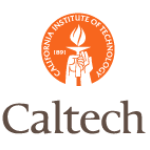- Industrie:
- Number of terms: 3726
- Number of blossaries: 0
- Company Profile:
Dwarf spheroidal galaxy in the Andromeda subgroup of the Local Group. It is among the intrinsically faintest members of the Local Group.
Industry:Astronomy
Dwarf spheroidal galaxy in the Andromeda subgroup of the Local Group. It is among the intrinsically faintest members of the Local Group.
Industry:Astronomy
Zeeman effet in which spectral lines are split into several components, in contrast to the normal Zeeman effect which results in only two distinct components.
Industry:Astronomy
(alpha Sco, HR 6134) A red M1 Ib supergiant. It has a B3 V companion, which is a radio source.
Industry:Astronomy
1) Peculiar A-type stars ("magnetic" A stars) that show abnormally strong lines, sometimes of varying intensity, of certain ionized metals. Recent evidence indicates that all Ap stars are slow rotators compared with normal A stars.
2) Star with spectral type A in which the lines of one or several elements are abnormally enhanced. Traditionally the most important subgroups are Si λ4200, Hg-Mn and Cr-Eu-Sr stars. The latest objects of the latter group correspond to early F-type.
3) Stars can be classified according to their surface temperatures, which determine, in large part, the spectrum of radiation they emit. A stars have surface temperatures between about 7,500 and 11,000 degrees centigrade. Peculiar A stars are A stars whose emitted radiation spectra have many of the characteristics of A stars but are peculiar in certain ways.
Industry:Astronomy
Prototype of a small group of asteroids whose orbits intersect that of Earth.
Industry:Astronomy
One of a small group of asteroids whose orbits intersect that of Earth. They are named for the prototype, Apollo.
Industry:Astronomy
Successful US lunar exploration program in which the Apollo spacecraft 1 to 6 were unmanned; 7 to 10 were manned but did not land; and 11, 12 and 14 to 17 landed and returned safely. (Apollo 13 was an aborted mission.) The first men to land on the Moon were Neil Armstrong and Edwin Aldrin, from Apollo 11, on 20 July 1969. The final Apollo flight (17) lasted from 7 to 19 December 1972, and left a considerable quantity of exploratory devices on the lunar surface.
Industry:Astronomy
